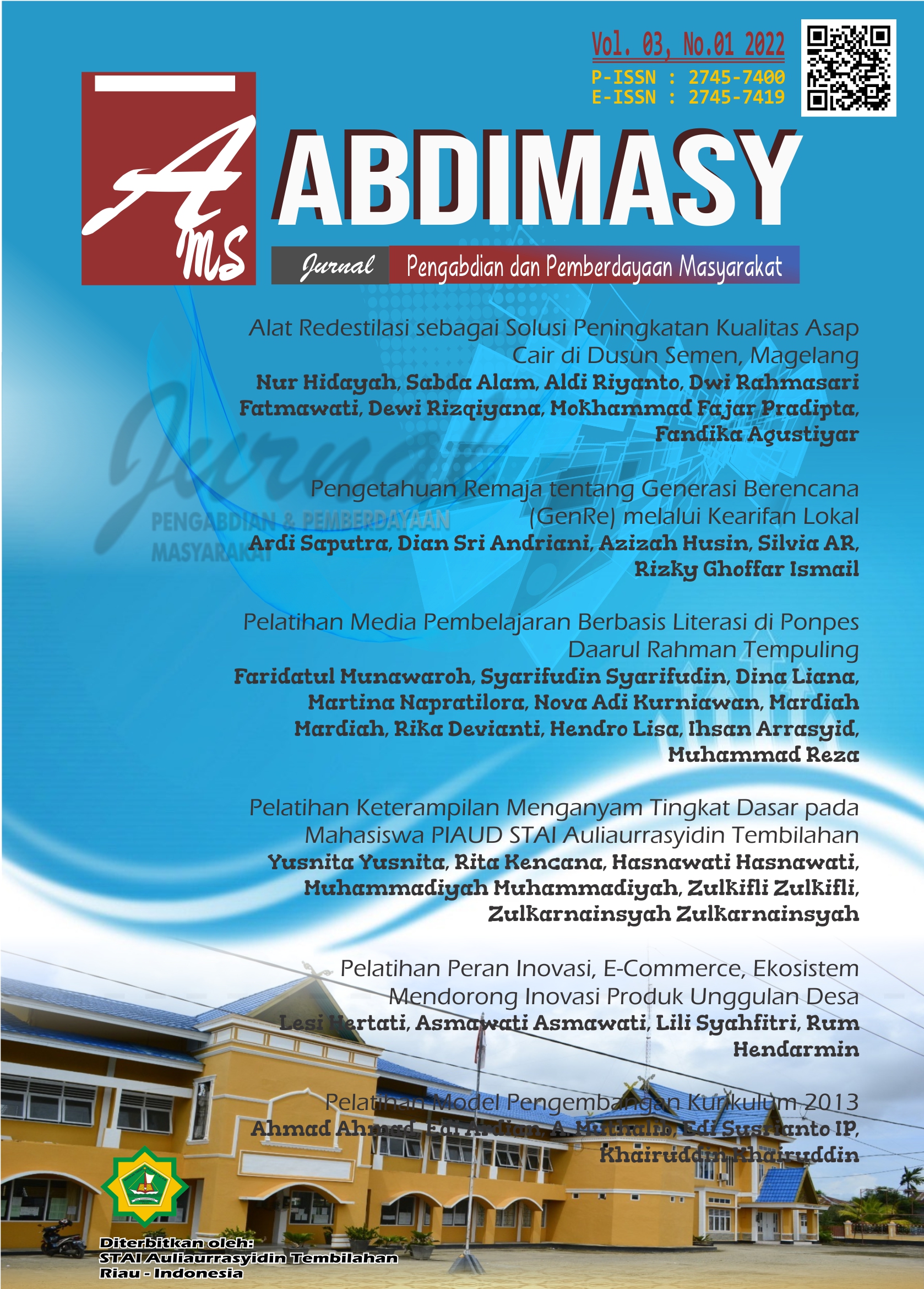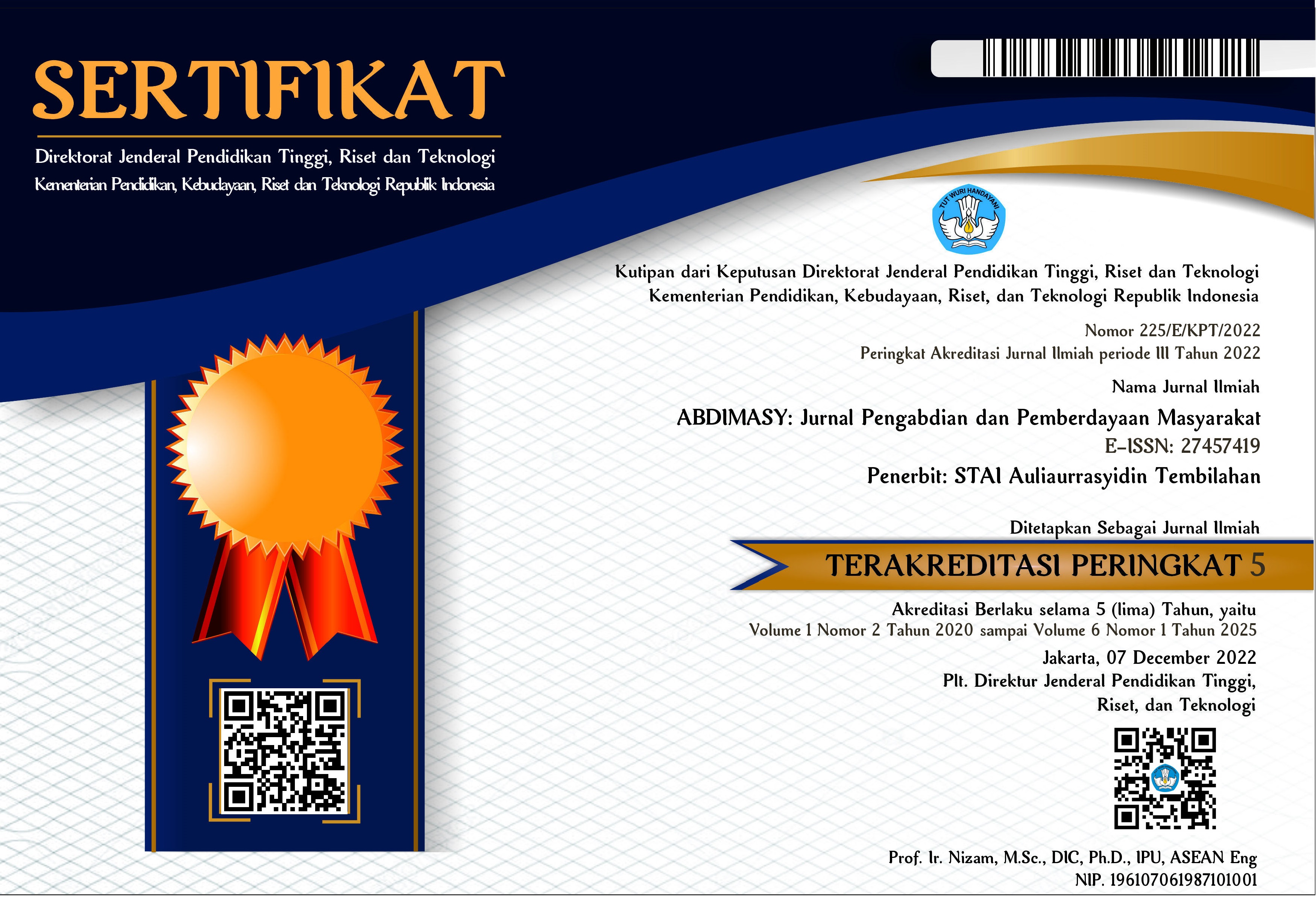Pelatihan Media Pembelajaran Berbasis Literasi di Ponpes Daarul Rahman Tempuling
DOI:
https://doi.org/10.46963/ams.v3i1.493Keywords:
Literacy, Learning Media, ServicesAbstract
The development of education in the world cannot be separated from the development of the industrial revolution because it indirectly changes the order of education and changes the order of learning in the classroom. Information and technology affect the activities of students and teachers. The role of the teacher, who has been the sole provider of knowledge, has shifted somewhat. The role and presence of the teacher in the classroom will be increasingly challenging and require very high innovation as the use of learning media. It is expected that literacy-based learning media as a problem solver for teachers in managing the classroom. The problem in the field is that there are still some teachers using the media in teaching the old system, most students have not been able to use the technology that has been developed at this time, most are still using the monotonous learning system, some students have not had the opportunity to learn to use the media. The method in this service uses counseling or learning media training which aims to provide understanding to teachers and students. The results that the team carried out went well according to the plans that had been prepared before the activity took place.
Downloads
References
Aoun, J.E. ( 2017). Higher Education in the Age of Artificial Intelligence. US: MIT Press.
Azhar, A. (2010). Media Pembelajaran. Jakarta: PT Raja Grafindo Persada.
Trianto, (2011) Desain Pengembangan Pembelajaran Tematik, Jakarta: Kencana Prenamedia Group.
Wina. S, (2012). Media Komunikasi Pembelajaran. Jakarta: Kencana Prenamedia Group.
Yahya. (2018). Era Industri 4.0: Tantangan dan Peluang Perkembangan Pendidikan Kejuruan Indonesia. Fakultas Teknik Universitas Negeri Makassar.
Downloads
Published
Issue
Section
License
Authors who publish with this journal agree to the following terms:
1. Copyright on any article is retained by the author(s).
2. The author grants the journal, right of first publication with the work simultaneously licensed under a Creative Commons Attribution shareAlike 4.0 International License that allows others to share the work with an acknowledgment of the work’s authorship and initial publication in this journal.
3. Authors are able to enter into separate, additional contractual arrangements for the non-exclusive distribution of the journal’s published version of the work (e.g., post it to an institutional repository or publish it in a book), with an acknowledgment of its initial publication in this journal.
4. Authors are permitted and encouraged to post their work online (e.g., in institutional repositories or on their website) prior to and during the submission process, as it can lead to productive exchanges, as well as earlier and greater citation of published work.
5. The article and any associated published material is distributed under the Creative Commons Attribution-ShareAlike 4.0 International License





2.png)



